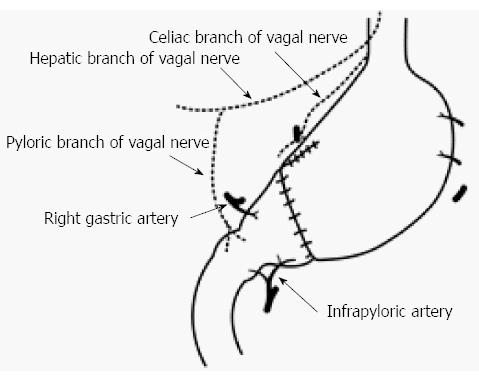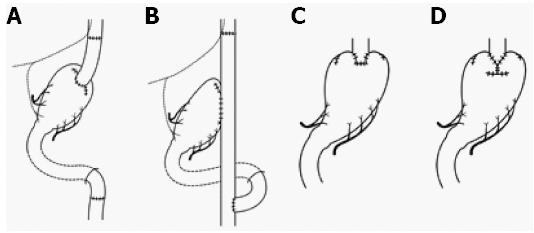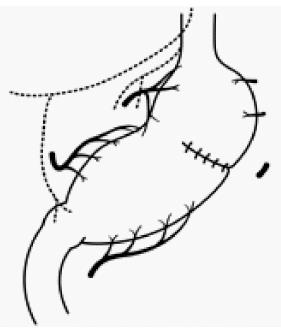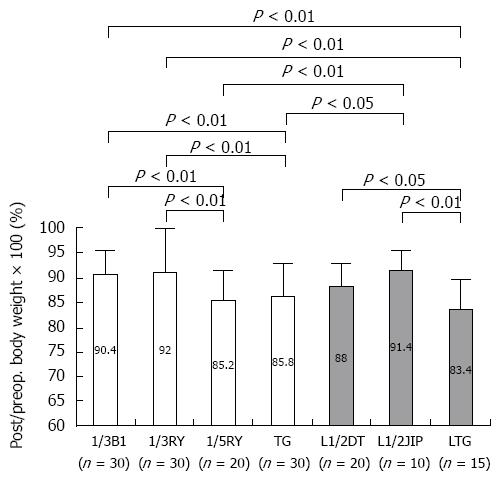Copyright
©The Author(s) 2016.
World J Gastroenterol. Jul 14, 2016; 22(26): 5888-5895
Published online Jul 14, 2016. doi: 10.3748/wjg.v22.i26.5888
Published online Jul 14, 2016. doi: 10.3748/wjg.v22.i26.5888
Figure 1 Pylorus-preserving gastrectomy.
Figure 2 Proximal gastrectomy.
A: Jejunal interposition; B: Double tract method; C: Esophagogastrostomy with fundoplication; D: Esophagogastrostomy with double flap technique.
Figure 3 Jejunal pouch interposition.
A: Distal gastrectomy with jejunal pouch interposition; B: Proximal gastrectomy with jejunal pouch interposition; C: Total gastrectomy with upper jejunal pouch interposition; D: Total gastrectomy with lower jejunal pouch interposition.
Figure 4 Segmental gastrectomy.
Figure 5 Local gastrectomy.
Figure 6 Postoperative to preoperative body weight ratio according to the size of the gastric remnant and the type of reconstruction following open distal and laparoscopic proximal gastrectomy including total gastrectomy.
1/3B1: Distal 2/3-gastrectomy with Billroth I reconstruction; 1/3RY: Distal 2/3-gastrectomy with Roux-en-Y reconstruction; 1/5RY: Distal 4/5-gastrectomy with Roux-en-Y reconstruction; TG: Open total gastrectomy with Roux-en-Y reconstruction; L1/2DT: Laparoscopic 1/2-proximal gastrectomy with double tract reconstruction; L1/2JIP: Laparoscopic 1/2-proximal gastrectomy with jejunal interposition reconstruction; LTG: Laparoscopic total gastrectomy with Roux-en-Y reconstruction.
- Citation: Nomura E, Okajima K. Function-preserving gastrectomy for gastric cancer in Japan. World J Gastroenterol 2016; 22(26): 5888-5895
- URL: https://www.wjgnet.com/1007-9327/full/v22/i26/5888.htm
- DOI: https://dx.doi.org/10.3748/wjg.v22.i26.5888














